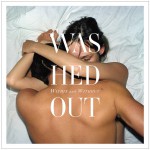|
|
 |
Dusted Reviews
Artist: Washed Out Album: Within and Without Label: Sub Pop Review date: Jul. 11, 2011 |

|
|
|
 |
Emulating that moment between ’80s synth-pop and the early ’90s alternative uprising has become an art form. One has to balance the use of rigidly precise rhythms of techno with inherently sloppy feedback. The melodies need to be dreamy, but equally tormented. The sounds of synthesizers and guitars must be interwoven to a degree of indecipherability. Equipment and effects must be imprecise and captured by the warm looseness of analog tape or an emulator of such. Vocals are necessary, but it’s very important they are buried just enough in the mix to instrumentalize their usage. Your record has to connect the dots between the sleek New Romantics and the ethereal dream-poppers. Finally, never forget to emote such adjectives as “shimmering,” “enigmatic” and “hypnotic.”
Sub Pop has definitely got their money’s worth with Washed Out, née Ernest Greene. He has managed to cherry-pick the best aspects of the above while leaning toward the amiable cheesiness of earlier decades (nostalgic synthesizer fails, epic midi tom fills, 120 bpm). The electronic rhythms of the New Romantics are the skeleton, and the warm noise of the dream-poppers is the skin of his first full-length, Within and Without. Add in an appreciation for Music Has the Right to Children-era Boards of Canada and the preciseness of John McEntire, and you’ve got yourself a winner.
However, Within and Without has one serious polarizer: It is impeccably safe. There is absolutely nothing differentiating or even exploratory about it. The tools are all immediately recognized, the melodies proven and ambiance overly characterized. It makes for a comfortable listen. Spin it for your tween brother or your middle-aged aunt, and you’ll get, at worst, a faintly positive reaction.
In the end, Washed Out feels more like a Bon Iver or The xx than one of his fellow niche-ers who carved out the scene. Within and Without is too comfortable and too smooth around the edges. It harnesses both the stylistic flamboyance and embrace for the danceable of the New Romantics as well as the ethereal textures of the dream poppers, but none of the rebellion to the mainstream that spurred both those movements (the latter being a reaction to the popularized former). It doesn’t even have the bedroom ambience that made the subgenre so affable and self-effacing to begin with. It’s a record with 20-20 hindsight vision. It perfects the past’s mistakes, but misses the fun in making them.
By Michael Ardaiolo
|







